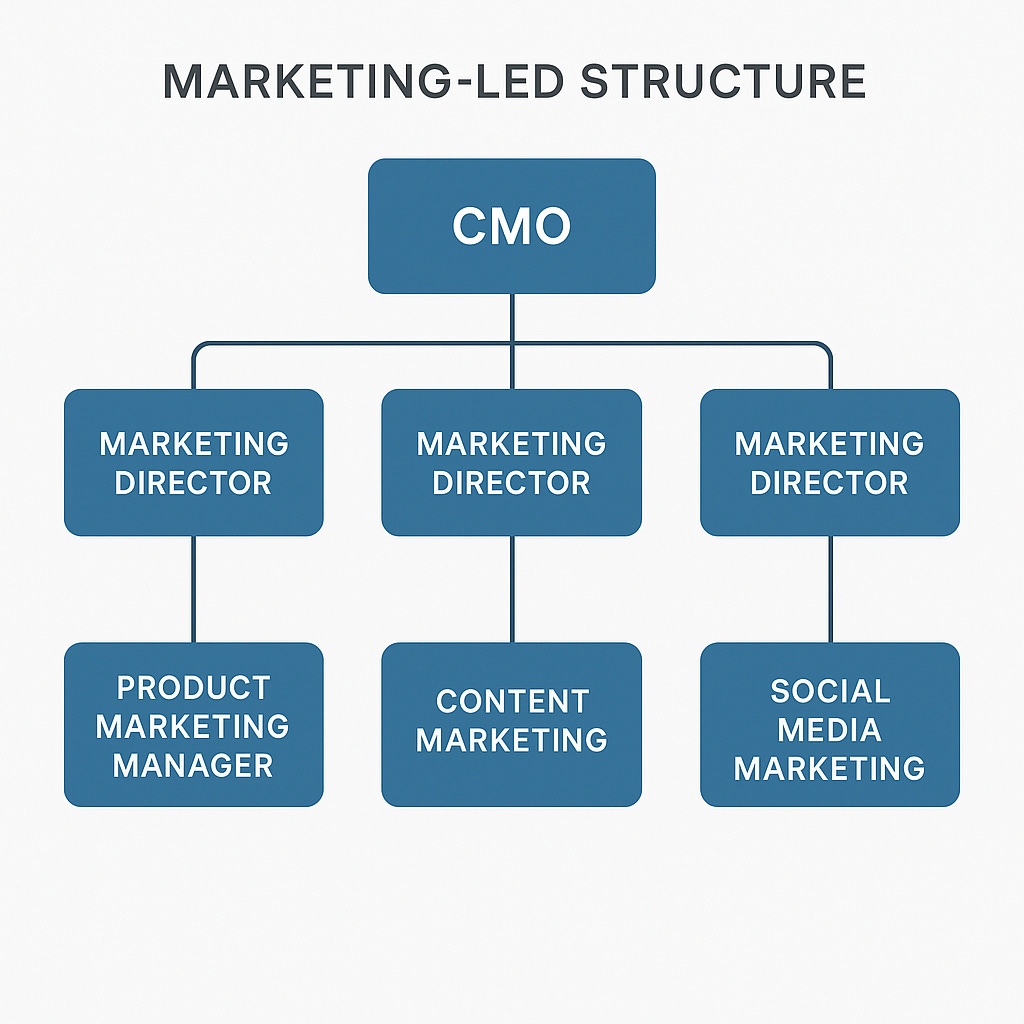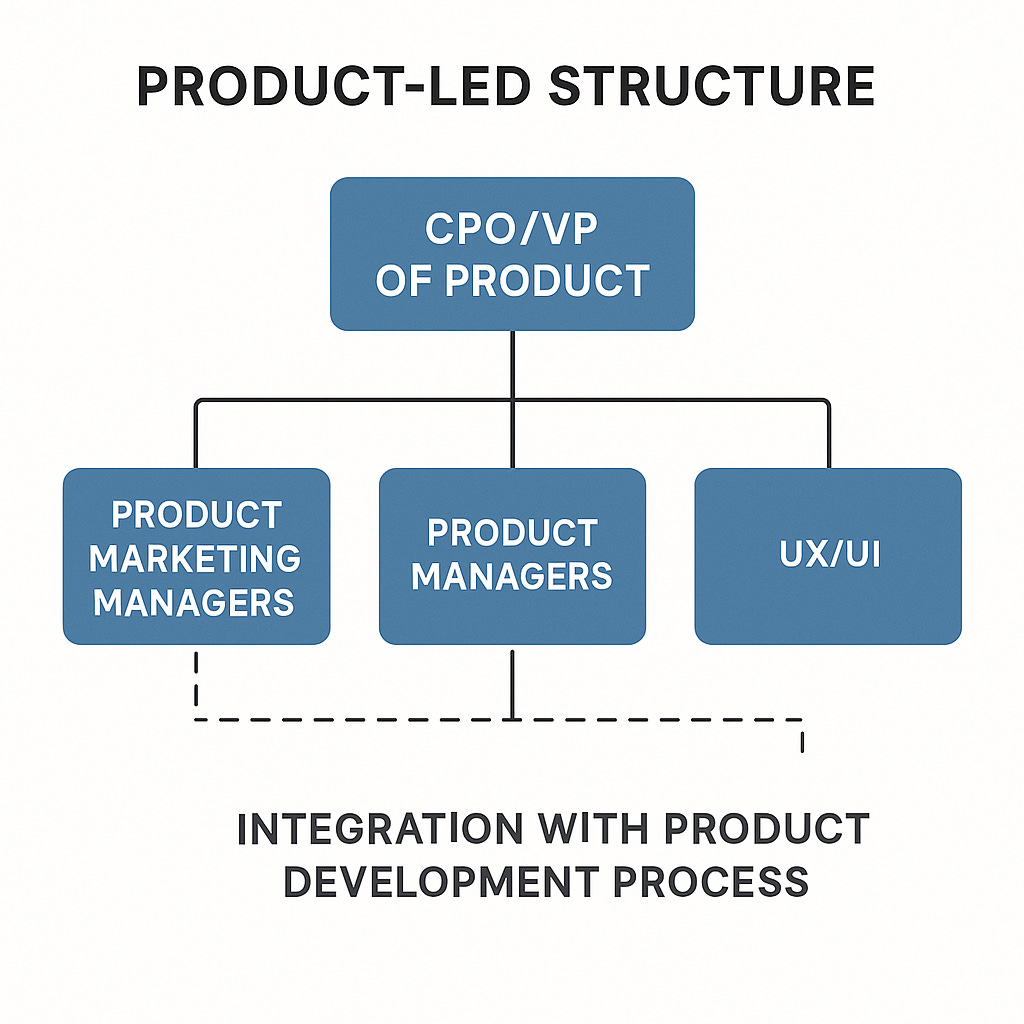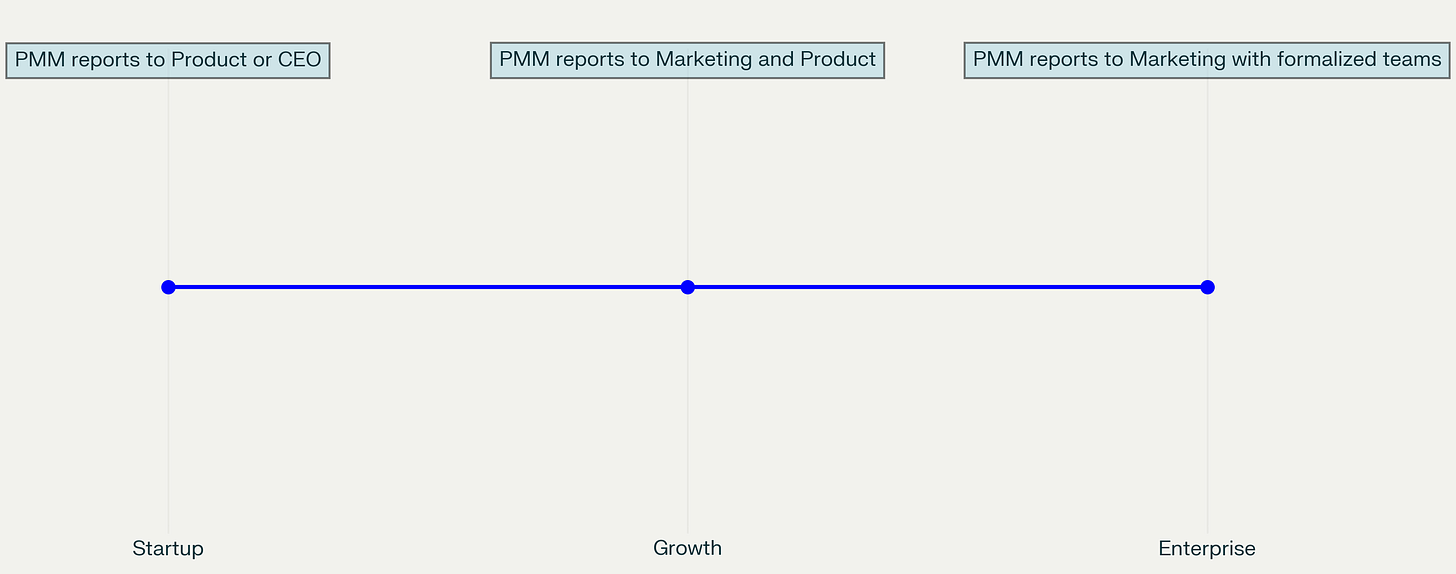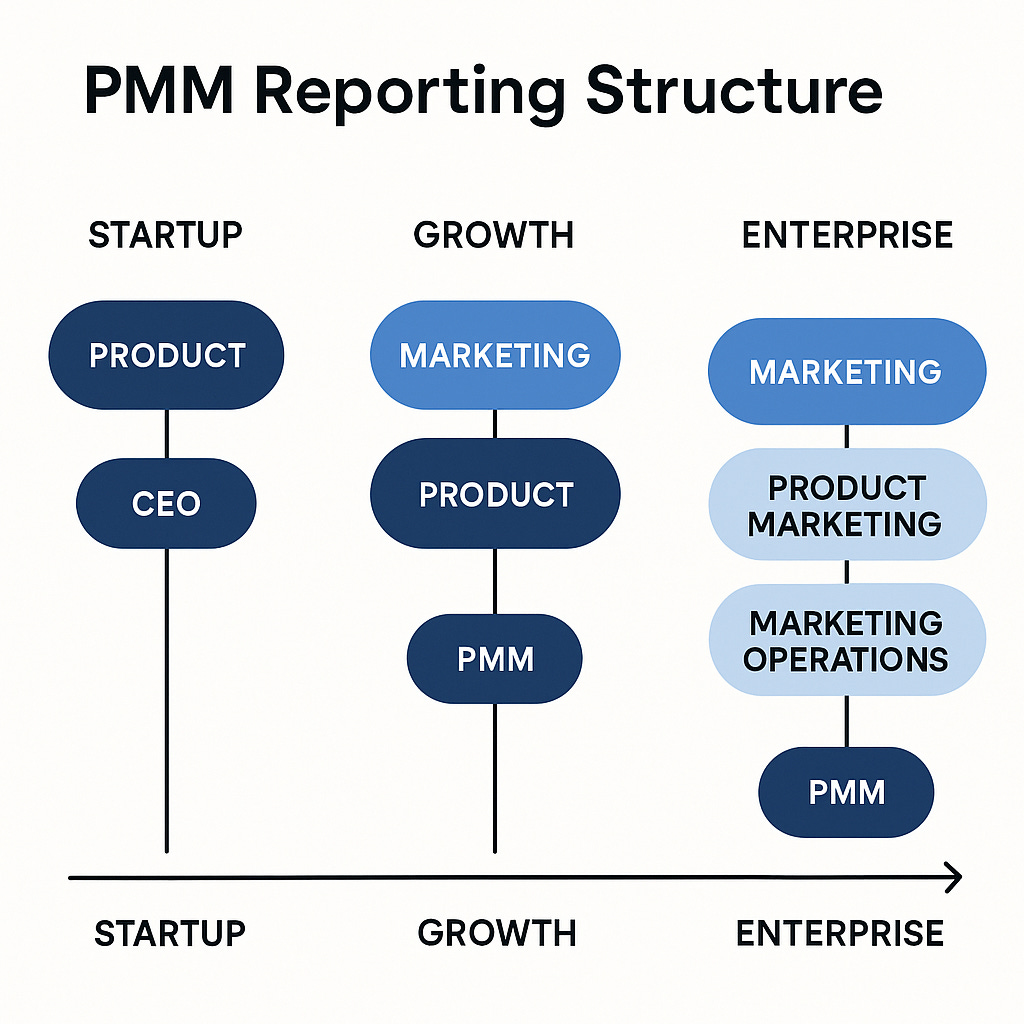Join the Product Marketing Summit Atlanta on June 3-4, 2025! Connect with 100+ PMM pros and learn from 30+ expert speakers from Etsy, Amazon, Dropbox, and more. Use code REMOTEMARKETER15 for 15% off your ticket. Grab your ticket now→
Product Marketing Managers bridge the gap between building great products and getting customers to use them.
But where should they sit in your organization? In Marketing? Product? Or directly under the CEO?
Here are the 3 options that will help you make the best decision for your career:
Understanding the Product Marketing Manager Role
Before deciding where your PMM belongs, let's clarify what they actually do:
Create go-to-market strategies for new products and features
Develop product messaging and positioning
Conduct market research and competitor analysis
Build buyer personas and customer journey maps
Train sales teams on product value
Work with marketing on campaigns
Gather customer feedback for product development
PMMs work across teams daily, connecting with Product, Marketing, Sales, and Customer Success.
This cross-functional nature is exactly why their placement sparks debate.
For those interested in mastering these responsibilities, download our Marketing Positioning Frameworks Guide that provides practical templates you can apply immediately.
Current PMM Placement Trends
Where do most PMMs report today?
66% report to Marketing departments
16% report to Product teams
5.8% report directly to CEOs (a growing trend in startups)
Each option creates different dynamics.
Let's look at the pros and cons of each approach.
Option 1: PMM Reports to Marketing
This is the most common setup, and for good reason.
When PMMs sit within Marketing, they integrate with broader strategies while maintaining product focus.
Advantages:
Better alignment with marketing campaigns
Stronger customer-facing messaging
Easier coordination with content teams
More focus on market insights
Clearer communication of product value
Challenges:
Possible disconnect from product development
Limited influence on the product roadmap
Risk of becoming just sales support
May lack deep technical knowledge
Might prioritize marketing goals over product success
As one marketing leader puts it: "When product marketing sits in Marketing, they have clearer lines to campaigns and messaging that resonate with customers."
Real-world examples:
Microsoft structures product marketing within their marketing department. This allows PMMs to align closely with broader marketing initiatives.
HubSpot positions PMMs under marketing leadership to maintain consistent messaging across their platform.
Salesforce uses marketing-led PMM alignment to make sure the campaigns are cohesive across their extensive product portfolio.
Option 2: PMM Reports to Product
Having PMMs work within the Product team creates tight alignment with development and strategy.
This approach is particularly effective when sales and marketing alignment is a priority for your organization.
Advantages:
Closer connection to product roadmap
Deeper understanding of technical details
More influence on product decisions
Better at translating features into benefits
Stronger relationship with developers
Challenges:
May focus too much on internal product details
Risk of using overly technical language
Possible disconnect from marketing strategies
Could prioritize features over customer needs
Might lack marketing expertise
One product leader explains: "A PMM should sit on Product and market based on what the Product Manager has deemed as key features and KPIs."
Real-world examples:
Apple famously keeps product marketing tightly integrated with product development to maintain their focus on user experience
Atlassian structures PMMs under product teams to preserve technical accuracy in their developer-focused messaging
Slack positions product marketers within product teams to maintain deep feature knowledge in their competitive collaboration space
Option 3: PMM Reports to CEO (Emerging Trend)
An increasingly popular option in smaller companies is having PMMs report directly to the CEO. This gives them unique strategic visibility.
Advantages:
Strategic impact at the highest level
A balanced view of product and marketing priorities
Freedom to implement cross-functional initiatives
Direct alignment with business strategy
Authority when mediating between teams
Challenges:
CEO may lack time for proper mentorship
Potential isolation from day-to-day operations
Unclear resource allocation
This may create confusion about responsibilities
Limited peer support
This structure works well for organizations where product marketing functions as a central strategic role rather than supporting either product or marketing.
In these organizations, PMMs often need to protect both product and brand integrity as discussed in our product marketing brand protection guide.
Real-world examples:
Notion had their early product marketing report directly to leadership, enabling rapid strategic pivots
Airtable (in earlier growth stages) positioned PMMs with direct CEO access to facilitate cross-functional implementation
Canva maintains executive-level PMM reporting to make sure that marketing strategies directly align with the company's vision
Key Factors That Should Influence Your Decision
Consider these key factors when deciding where your PMM should sit:
1. Company Size and Growth Stage
Smaller companies (under $10M ARR): PMMs often report to Product or CEO while establishing product-market fit.
Larger companies: Marketing placement often works better to scale go-to-market efforts.
2. Product Complexity
Highly technical products: Consider Product team placement for accurate technical understanding.
Consumer-facing products: Marketing placement may work better for customer-focused messaging.
3. Go-to-Market Strategy
Product-led growth: PMMs often sit under Product
Marketing-led approach: PMMs typically sit within Marketing
Sales-led organizations: Either option works, depending on priorities
4. Organizational Maturity
Mature organizations: Marketing placement helps integrate PMMs into broader strategies.
Younger organizations: Product placement might provide clearer direction.
5. Existing Team Strengths
Look at your current leadership strengths:
Strong product knowledge in Marketing? PMMs might thrive there.
Market-savvy Product leaders? They might provide good PMM oversight.
Career Advancement Paths for PMMs
Where a Product Marketing Manager sits in your organization affects not just their daily work but also their long-term career growth.
Understanding these pathways can help you make strategic career choices.
PMMs in Marketing Teams
Career trajectory:
Start with tactical marketing projects and campaign execution
Advance to owning product launches and messaging strategy
Progress to senior roles overseeing multiple product lines
Potential path to Marketing Director or CMO positions
Skill development focus:
Strong marketing campaign expertise
Customer messaging and positioning
Brand alignment and market research
Cross-channel marketing strategy
As one PMM director noted:
"Marketing-based PMMs often develop broader expertise across various marketing disciplines, making them versatile candidates for senior marketing leadership roles."
For insights on compensation expectations throughout this journey, explore our product marketing managers salaries analysis.
PMMs in Product Teams
Career trajectory:
Begin with product-focused messaging and technical content
Grow into strategic product positioning and launch planning
Advance to leading product strategy for major offerings
Potential path to Product Management or Product leadership
Skill development focus:
Deep product knowledge and technical expertise
Product strategy and roadmap planning
Feature prioritization insights
Technical sales enablement
Product-based PMMs typically develop expertise that can create dual career paths:
"PMMs working closely with product teams often have the option to transition into product management roles as they gain technical depth and strategic product thinking."
PMMs Reporting to CEO
Career trajectory:
Start with high-visibility strategic projects
Develop cross-functional leadership skills early
Build executive communication experience
Potential path to General Management or COO roles
Skill development focus:
Business strategy and executive communications
Cross-functional leadership
Strategic planning and execution
Company-wide initiatives
This structure often accelerates leadership development:
"PMMs with direct CEO reporting lines typically gain broader business exposure earlier in their careers, developing strategic thinking that prepares them for general management roles."
If you're aiming for this trajectory, our first 90 days VP marketing SaaS guide provides valuable insights for leadership transitions.
Level Up Your PMM Career: Product Marketing Summit Atlanta 2025
Want to accelerate your product marketing career regardless of your reporting structure? Here's your chance.
We're thrilled to partner with Product Marketing Alliance to bring you exclusive access to the Product Marketing Summit Atlanta, happening June 3-4, 2025.
This is the premier event for serious PMMs looking to level up their skills and network with industry leaders. You'll gain insights from product marketing experts at companies like:
Etsy
Amazon
Dropbox
Atlassian
SAP
The Coca-Cola Company
Delta Airlines
And many more
Why this matters for your PMM career:
Connect with 100+ product marketing professionals
Learn from 30+ expert speakers over two full days
Master essential skills like messaging strategy, AI optimization, and cross-functional alignment
Build relationships with leaders from top companies
Exclusive offer for MarketersRemote readers: Save 15% on your ticket with code REMOTEMARKETER15 at checkout.
Secure your spot at Product Marketing Summit Atlanta now →
Making Strategic Career Choices
When evaluating PMM roles, consider:
Which leadership path matches your long-term goals?
What skills do you most want to develop?
Which organizational structure offers the growth opportunities you value?
The most successful PMMs intentionally select roles that align with their career ambitions, rather than simply accepting default reporting structures.
For additional guidance on navigating these decisions, check out our career tips for marketing leaders.
Best Practices for Effective PMM Integration
No matter where your PMM sits, follow these practices:
1. Create Clear Cross-Team Processes
Set up formal collaboration between Product, Marketing, and Sales through:
Regular cross-functional meetings
Shared documentation
Collaborative planning sessions
2. Define Clear Goals and Metrics
Setup KPIs that reflect both product and marketing goals:
User retention rate
Customer acquisition rate
Free trial to paid conversion rate
Product adoption metrics
3. Secure Executive Support
Get leadership to publicly support the PMM role and highlight its importance to both product and marketing outcomes.
4. Build a Collaborative Culture
Foster open communication between Product and Marketing teams. PMMs thrive when teams work together rather than in silos.
5. Try a Matrix Structure
Consider a matrix approach where PMMs have dotted-line reporting to both Product and Marketing.
This provides benefits from both worlds but requires clear communication.
6. Review Regularly
Reassess PMM placement as your company grows.
What works at one stage may not work at another. Some companies rotate PMMs between departments every 18-24 months.
Finding the Right PMM Structure for Your Organization
There's no one-size-fits-all answer to where PMMs should sit. The right placement depends on your specific needs.
Instead of following industry trends blindly:
Consider your company size and product complexity
Assess your team strengths and organizational maturity
Choose a structure that supports your business goals
Remember that effective PMMs build strong relationships with both Product and Marketing teams regardless of where they formally report.
Focus less on org chart placement and more on enabling your PMM to drive strategic value.
Struggling with these decisions? Our marketing career coaching services can provide personalized guidance.
Want to Connect with Fellow PMMs and Level Up Your Skills?
Whether you report to Marketing, Product, or the CEO, professional development is essential for PMM career growth. Don't miss the Product Marketing Summit in Atlanta this June for unparalleled learning and networking.
Register today with code REMOTEMARKETER15 for 15% off →
With the right structure, you'll achieve greater product success and stronger go-to-market execution-valuable skills in today's remote marketing job market where top positions command $50K-250K. Check out our exclusive weekly remote position listings →
For comprehensive salary data across marketing roles, explore our marketing salaries insights report.







